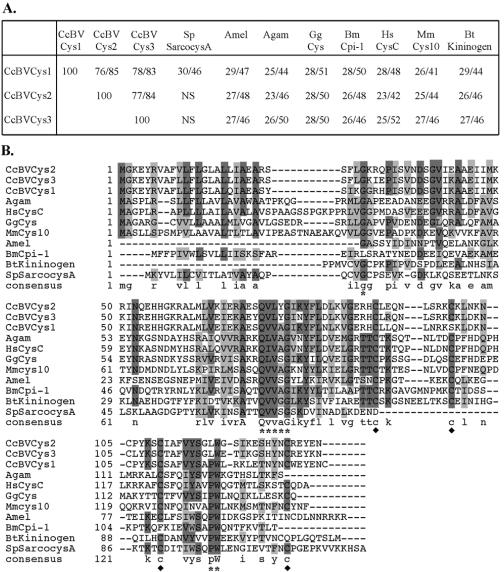FIG. 3.
Pairwise BLAST and multiple sequence alignment of CcBV cystatins with insect and noninsect cystatins. (A) Pairwise BLAST of CcBV cystatins with insect and noninsect cystatins. Numbers indicate percentage identity/percentage similarity. Preprotein sequences were compared. (B) Multiple sequence alignment of CcBV cystatins with related cystatins using the Clustalw program (http://clustalw.genome.jp/) combined with the BoxShade Server (http://www.ch.embnet.org/software/BOX_form.html). Preprotein sequences were compared in this alignment. The numbering refers to CcBV Cystatins labeled with the number one have the first amino acid of the signal peptides. The three conserved active sites of cystatins are indicated by stars beneath the concensus sequence: G residue, Qx(V)xG motif and (P)W residues. The cysteine residues in conserved positions are indicated by black diamonds. Agam, Anopheles gambiae (mosquito, Diptera; GenBank accession number EST AJ284933); Amel, Apis mellifera (honeybee, Hymenoptera; Honeybee Genome Project accession number Amel_1.1contig2738), Bm: Brugia malayi (filarial nematode; GenBank accession number AAC47623); Bt, Bos taurus (bovine; GenBank accession number P01045); Gg, Gallus gallus (chicken; GenBank accession number NP_990831); Hs. Homo sapiens (GenBank accession number NP_000090); Mm, Mus musculus (mouse; GenBank accession number NP_067380); Sp, Sarcophaga peregrina (flesh fly, Diptera; SwissProt accession number P31727).

